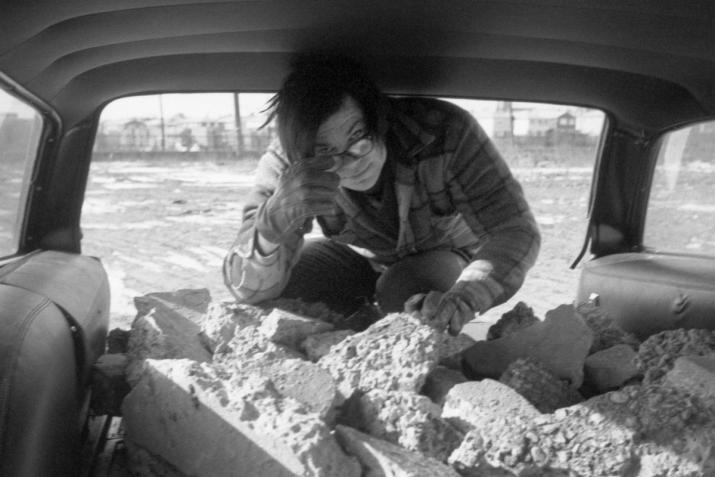

Smithson’s "Upside-down Trees" at MoCA, Krakow
In April 1969 Virginia Dwan, Nancy Holt and Robert Smithson took a trip to Mexico, and made an unannounced stop in Captiva Island, Florida to see Robert Rauschenberg. Here Smithson made the second in a series of artworks titled Upside-Down Trees, which can be seen illustrated above. The first was made in Alfred, New York State, and the third in the Yucatán, Mexico.
Dwan, Holt and Smithson went on a number of trips together. On this April 1969 journey they visited Sanibel Island in Florida before Captiva Island, and travelled on to Mérida, Mexico. In September 1969, Artforum International published an illustrated narrative of this trip, titled Incidents of Mirror Travel in the Yucatán. Smithson describes how in Yucatán ‘the third upside-down tree was planted. The first is in Alfred, New York State, the second is in Captiva Island, Florida; lines drawn on a map will connect them. Are they totems of rootlessness that relate to one another? Do they mark a dizzy path from one doubtful point to another? Is this a mode of travel that does not in the least try to establish a coherent coming and going between the here and the there?’
The art historian James Meyer describes: ‘To bury a tree upside down is a violent reversal of its natural state, an upending of its vitalist associations. [. . .] On the sunny beach at Captiva the second ‘Upside-Down Tree’ announced an entropic eternity devoid of human history and organic life, an earth seethed in crystals and sheets of ice.’ [James Meyer, ‘Los Angeles to New York: Dwan Gallery 1959-1971’. National Gallery of Art 2017]
A slide show of images relating to all three of Smithson’s Upside-Down Trees is on display at the Museum of Contemporary Art, Krakow from April 26. Bringing together over seventy artworks, Nature in Art explores how human beings have exploited and attempted to master nature, addressing the question through beauty, ecology, confrontation, matter and symbollism.
Robert Smithson, Upside Down Tree II (1969)
Captiva Island, FL, USA
©Holt/Smithson Foundation, Licensed by VAGA at ARS





